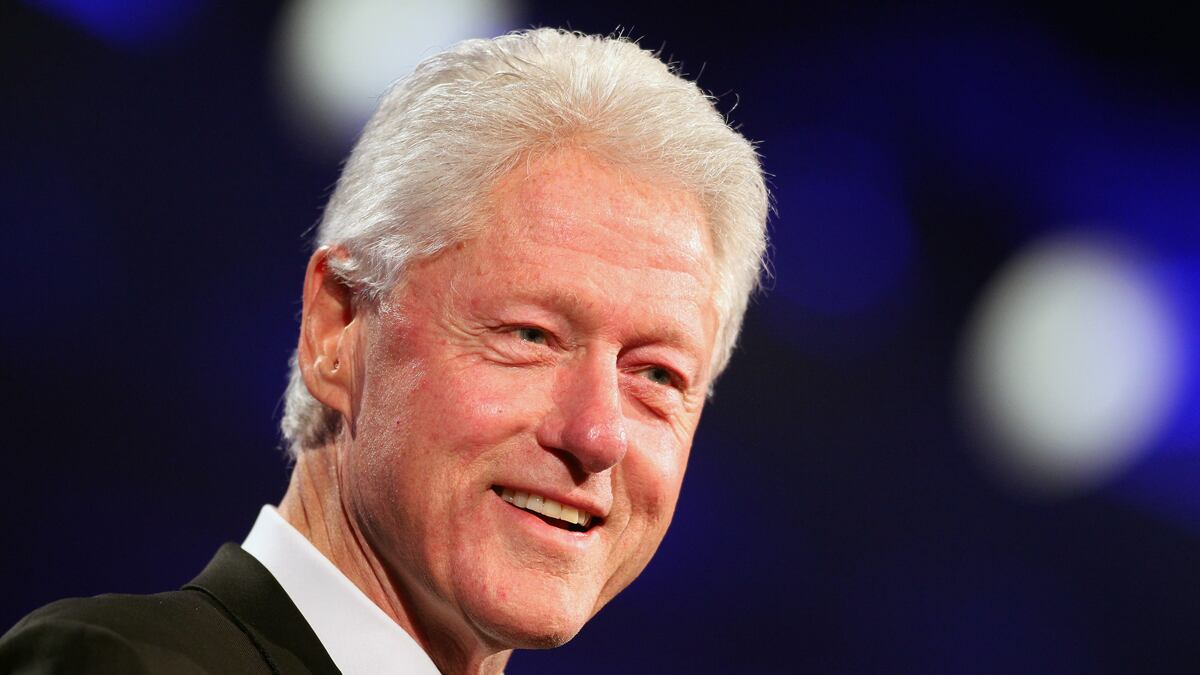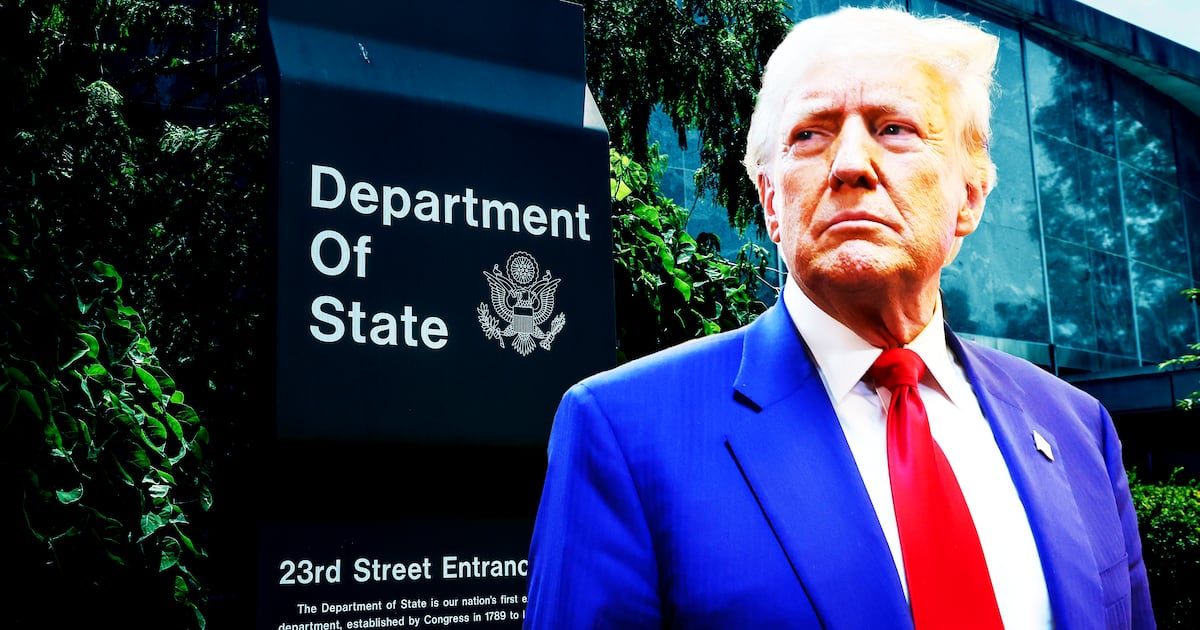In a country looking to regain its economic mojo and self-confidence, it’s easy to imagine why Americans might look back fondly at Bill Clinton, who oversaw an era in which the U.S. felt safe, victorious, prosperous, and assured. With those emotions in short supply—along with jobs, credit, and a host of other things—Clinton’s back on the scene with a new book, Back to Work. The volume is basically a longer version of a cover story the Man from Hope wrote for Newsweek back in June. So what’s in the director’s cut? We read Back to Work and picked out the best parts.
1. He Thinks Americans Love to Bash the Government
Clinton’s first order of business: demolish the mindset that would preclude anyone taking up his ideas in the first place. With the Tea Party squarely in his sights, he complains that many Americans have decided that the blame for the recession lies with the government doing too much. Quite the contrary, Clinton says: the government did too little to regulate banks. The real problem was excessive borrowing in the finance industry. “One of the most interesting things to me is how easy it was to persuade so many Americans, even those who rely on government programs, to join in the government-bashing,” he writes, pointedly referring to Washington’s successes during his term in office (that becomes a familiar refrain throughout). But the only way out of the hole is to fix government, not strangle it: “We have to get back to the future business. And that’s why politics, with all its frustrations and distractions, is still important.”
2. He Could Have Helped Avoid 2010 Midterm Disaster
While Clinton’s sharpest jabs are aimed at extreme conservatives, the book isn’t without complaints about his own party. He twice expresses shock that Democrats didn’t raise the debt ceiling in 2010, instead setting the stage for the painful summer budget showdown once the GOP took over the House. He also reports that he and Vice President Joe Biden sought unsuccessfully to unite Democrats with a message that could have mitigated the shellacking of the midterm elections—but the elder statesmen were rebuffed. “Vice President Biden and I tried to get the Democratic National Committee” to craft a national message, but “We couldn’t persuade the decision makers to do so.” Clinton seems to be suggesting that since the DNC wouldn’t listen then, they’d better be listening now.

3. He’s Not Sorry He Repealed Glass-Steagall
Attention, Occupy Wall Street: You won’t get an apology from Bill Clinton for signing the repeal of Glass-Steagall. That Depression-era law split investment banks and traditional ones but was eliminated in 1990s and is often blamed for the excesses that brought down the economy. But Clinton won’t back down. “I’ve seen this argument in print dozens of times without supporting examples, as if it were self-evident. It isn’t. Many purely commercial banks made bad mortgage loans and failed.”
4. He Doesn’t Get Why Tea Partiers Oppose Entitlements
Politicians on both sides of the aisle frequently debate the budgets of the Department of Education, the Environmental Protection Agency, the Interior Department, and a host of other small government offices, but they’re seldom honest about how little of the government’s spending goes to the agencies. “If you’re against them all, you can be a leader in the antigovernment movement’s next struggle!” Clinton quips. “It won’t, however, make you a leader in bringing down the debt that twenty years of combining tax cuts with more spending ran up.” Likewise, foreign aid is a miniscule fraction of federal finances. The real struggle is over Medicare, Medicaid, and Social Security. While the point is tough to dispute, Clinton doesn’t recognize that many Tea Partiers and conservatives oppose those offices on principle, regardless of the cost, and while he clearly believes the EPA is important, he never attempts to make the case for it.
5. He’s a Big Fan of Simpson-Bowles
Clinton’s goal for the book is clearly to synthesize a range of center-left policies and make the case for them, so it’s not surprising that there are few bold new ideas. But it’s striking just how frequently Clinton endorses the conclusions of the Simpson-Bowles Committee, the bipartisan study group on deficit reduction that President Obama convened, and whose conclusions were almost immediately rejected by liberals and conservatives alike. But on issue after issue—notably, most recommendations on Social Security reform—Clinton gives Simpson-Bowles a thumbs-up. And he returns to his famous triangulation by criticizing a plan laid out by the Congressional Progressive Caucus, the most liberal Democrats in the House and Senate. Their plan, though interesting, doesn’t deal with rising health-care costs and might drive corporations overseas, he warns.

6. He Has an Aggressive Plan for Fixing Housing
After diagnosing the problems in his first 100 pages, the second half of the book is devoted to prescriptions. Perhaps most interesting is his take on mortgages, which remain a dangerous soft spot for the economy years after the housing bubble burst. He lays out an aggressive plan for reducing the principal for homeowners who owe more than their houses are worth (for those who have kept up on their mortgages and are upset others are getting a break, Clinton basically says too bad: it’s important for the health of the whole economy); turning mortgages for even more troubled homeowners into leases; speeding up the foreclosure process; and insisting that Fannie and Freddie turn vacant houses into rentals.
7. He Wants to Double Exports
But even more sweeping—and perhaps most interesting—is Clinton’s last major proposal. The U.S. needs to aim to double its exports. Citing academic research, he scoffs at Republican complaints that only lower taxes on “job creators” can help employment. “Instead … we need a national economic strategy,” he writes. “We have to change the incentives to make companies more willing to invest in making America more productive than in outsourcing more jobs. Among the ways to do that: borrow a page from the Germany playbook and focus on high-end goods (think BMW); actually enforce existing trade laws; and rather than trying to bring back heavy manufacturing, just export what America does best—services, including health care and education. But he’s interested in hearing other proposals too, and lest you think he’s a relic of the 1990s, Clinton shows he’s hip to social media. “Right now, the United States needs all the good ideas we can get. If you disagree with any of these proposals, or if you’ve got a better idea, I invite you to share your ideas on social media platforms using the hashtag #backtowork.”






